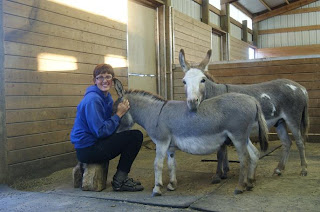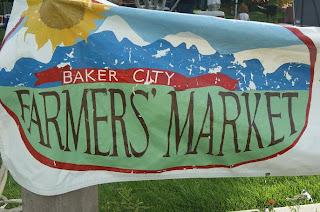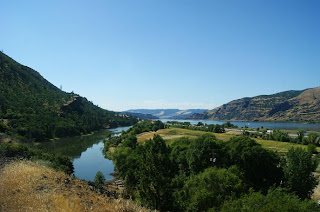First and foremost, the trip is over -we made it safely to the west coast on Thursday, July 28th, 2011 at approximately 1:13pm Pacific time. Secondly, our kickstarter project was a complete success, and we sincerely thank everyone who contributed to it. Lastly, we deeply apologize to all of our regular readers for the delay in making this post (as usual).
We left the Radio Room restaurant/cafe in Portland and made our way to St Helens, OR -a short 30 mile ride. Our excitement to almost be done with our unforgettable journey seemed to propel us at nearly supersonic touring speed (15mph). We met up with our incredible hosts for the night, Ron and Patty (family friends of Caitlin), in town and shortly thereafter were dining in their beautiful home in the hills of western Oregon.
We chatted about our trip thus far at great length throughout the night, sharing photos and stories. As it was nearing sunset we heard what sounded like a loud rusty door hinge coming from outside. Patty informed us that her donkeys, Harley and Larry, were letting us know that it was now their dinner time. We went outside to the barn and met the boys up close and in person.
Donkeys are incredibly loving and docile, much like giant dogs in a way. Caitlin, of course, immediately took a liking to them and as with most of the family pets we have met on the trip, wants one of her own. Yeah, I'm sure the city of Philadelphia won't mind if we get a donkey...
We spent the night in comfort and awoke to a delicious breakfast of eggs, sausage, toast, and hash browns courtesy of chef Ron. Ron was even nice enough to drop us off a little outside the city limits of St Helens on highway 30 -the only road we would be on until Astoria. The nearly 70 mile ride to Astoria was, unlike the terrain from the Jersey shore to Philly, full of long rolling hills and steep mountain-like passes...
 |
| view from Ron & Patty's house |
Not only was the terrain a bit rough, but as we were climbing the first major pass of the day I heard the infamous hissing of air that can only mean one thing: a major puncture flat. Luckily we were less than 50 yards away from a scenic lookout area where we could pull over and change the tire. We reluctantly began our tire changing routine that at this point in the trip had become all too familiar. Once we had the tube replaced, I pumped it up and inspected the tire only to find a bulging, exposed tube...not good.
Upon further inspection, we noticed that the walls of my rear tire, which I had purchased in Cleveland, OH, were literally falling apart. A few long patches of the woven rubber-like fabric walls of the tire were fraying -leaving only a thin layer of weak rubber tubing between the integrity of the tire and the unforgiving concrete.
Combined with the fact that this flat put our total number of flats for the trip to over 20, the situation majorly dampened our spirits -especially since we were so close to the end. We had heard from someone, somewhere that if your tire was falling apart in a way such as this, you should lay a dollar bill (or duct tape) along the damaged parts of the tire to provide a makeshift barrier protecting the fragile inner tube from the road. So we did as we had heard, crossed our fingers, and continued on our way to Astoria -a short 45 miles away...
 |
| aftermath of the dollar bill barrier |
The weather was beautiful (70-80 and sunny), and along the way we stopped at a local fruit stand in Clatskanie, OR and later, a nice restaurant in Westport, OR that was famous for their pies. While we were dining in the restaurant we picked up the iconic yellow mustard squirt bottle only to find that it was not filled with your run-of-the-mill yellow mustard; rather, it was filled with a locally produced marionberry mustard. Marionberries are a hybrid berry, a cross between the blackberry and raspberry (see picture below for detailed origin). The mustard tasted like nothing I had ever had before -an intensely sweet berry taste masterfully combined with the sharp, distinct flavor of mustard seed.
As we neared Astoria we climbed a brutal 2.5 mile hill that we were told would be the last major hill of the ride. Naturally, we celebrated by snapping a photo at the summit, but we soon realized that our celebration was premature...As we descended what we thought would be our final hill and peered into the distance, utter disappointment and frustration descended upon our already beaten spirits.
After a brief period of stress-releasing expletives, we sucked it up and pushed our way through hill after hill until we finally reached Astoria. Astoria is located at the mouth of the Colombia River -where it spits out into the Pacific Ocean. The history of Astoria goes back 200 years, and it is a beautiful small town full of great places to eat, shop, and drink. We treated ourselves to a hotel room and headed out to dinner at one of the breweries in town -Ft George Brewing Company. It was a Wednesday night, and the place was packed so we sat at the bar where we met a few nice people who worked in the Coast Guard and were stationed in Astoria. After getting a few suggestions on what to eat and drink from them (as they were frequent patrons of Ft George's) we delighted in a few hand-crafted brews and freshly cooked meals of locally procured ingredients.
Ft Stevens State Park. Unfortunately, but extremely fitting for the way the trip went, we also awoke to my completely deflated rear tire. I knew it was a slow leak, so we pumped it up and went to breakfast at an awesome little place called The Colombian Cafe -serving delicious Latin American food complete with a selection of homemade jellies, salsa, and bread. After breakfast we walked across the street to the bike shop where I bought a new rear tire (Schwalbe Marathon) to ensure that the last 10 miles of the journey would be flat-free.
 |
| a small sample of the amount of patches on our tubes |
As we pedaled what would be the last ten miles of our nearly 4000 mile journey a very surreal feeling succumbed us. Was the trip really over? What else could go wrong? What are we going to do now that we don't have to bike 50+ miles/day? All these questions and more ran through our heads as we neared the Pacific. Biking through Ft Stevens State Park made it seem like we were in the middle of a forest -miles away from the coast; however, after a few miles we reached the beach at an old shipwreck named the Peter Iredale.
The frigid water of the north Pacific made the howling wind seem like a sand-paper slap in the face. We promptly dipped our front tires in the ocean and had a nice beach-goer snap a picture. We were excited, relieved, and in awe of the fact that we were done. We spent the next hour or two sitting on the beach, marveling and reminiscing of all that had happened to us along our journey.
 |
| Emergency reserve bottle of water (wood-er) filled in Philadelphia -now in the Pacific. |
Our hosts from St Helens were nice enough to give us a ride back from Astoria so we waited at the beach for Ron to arrive with the truck. We loaded up our bikes and gear, and drove back to St Helens -reliving each brutal hill in the comfort of an enclosed cabin, and with the luxury of a gas pedal. We returned to St Helens and went out for a celebratory dinner of fresh seafood at a local restaurant called The Klondike Restaurant and Bar with an interesting history (supposedly haunted).
 |
| TRIUMPHANT! |
The next day we slept in and relaxed for the first time in what seemed like months. Ron was so nice that he even gave us a ride into Portland from St Helens. We said our goodbyes and spent the next few days staying with a good friend of ours whom we had met in Copenhagen when Caitlin and I were both studying abroad there.
We flew back from Portland to Milwaukee where we picked up a minivan from my mom to drive back to Philadelphia. It feels good to be done with the trip, but "real life" will definitely take some getting used to after the unbelievable summer we've had.
Stay tuned for another post about our antics in Portland! (hopefully we'll be able to get this one done a little bit faster now that we're going to be in one place with a solid internet connection for a while)
Until then, keep your wheels on the ground.















































